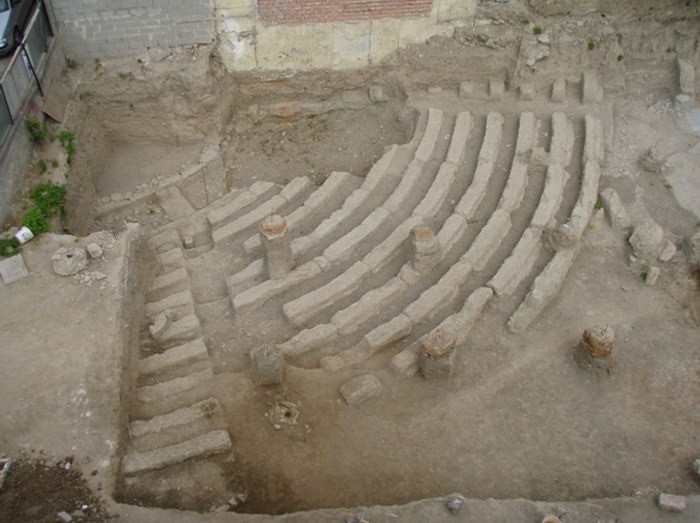Mycenaean Tholos Tomb of Acharnes
Informations
Mycenaean Tholos Tomb of Acharnes
The Tholos Tomb of Acharnes (or the so-called Tholos Tomb of Menidi) was excavated in 1879 by the German Archaeological Institute of Athens. It is the best preserved Mycenaean vaulted tomb in Attica and dates from the 14th-13th centuries BC. It was built to house the members of the elite families of the region. The tomb is filled with earth and surrounded by a low wall. It has the usual form of the tholos type tombs, consisting of a corridor, the entrance and the burial chamber, all built with rough masonry. The long (almost 27m, 3m wide) descending corridor leads through a narrower entrance passage to the burial chamber. The chamber, almost circular in plan, has a diameter of 8.35 m. It is built as a corbelled vault, with walls tapering towards the apex, where the final opening is closed by a large slab at a height of about 9 m from the ground. All the walls of the tomb are built with rough stones.
The lintel of the mouth consists of three successive monoliths. Above this, internally, the relief triangle can be seen, while externally, an original system was adopted by placing four smaller stones horizontally with gaps between them. It contained numerous finds, such as gold, silver, bronze, electron, glass paste and faience, seals of semiprecious stones, boar tusks probably parts of a helmet, bronze offensive weapons and a lot of ivory items. To those are included a cylindrical box in relief decoration of rams and fragments of two lyres, one of which is considered to be the oldest of the type, bearing in relief decoration of sphynxes on the base. Clay and stone vases existed as well. The four amphoras from Canaan are important as evidence of contacts with the southeastern Mediterranean. The findings in the corridor indicate that the ancestors were honored in later years until the 5th century BC. The most important finds from the Tholos tomb of Acharnes are exhibited in the National Archaeological Museum of Athens.








